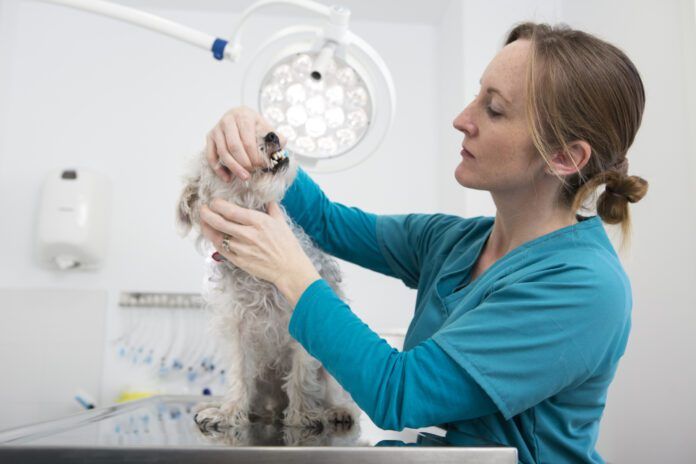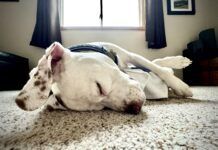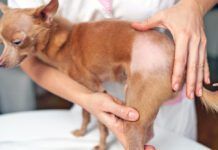Dogs can get a bump that looks like a person’s cold sore—that small crater-like ulcer on the inside of your lip. But, cold sores in humans are caused by the herpes simplex virus type 1, which cannot be transferred to or from your dog. (Dogs can get the canine herpes virus, but the symptoms more closely resemble a respiratory infection than a cold sore. The virus can also affect the eyes and genitalia.)
While dogs can get a variety of lip sores and red bumps, but one of the most common is chronic ulcerative paradental stomatitis, or “CUPS.” (It’s also sometimes called canine chronic ulcerative stomatitis.)
CUPS Looks like a Cold Sore
CUPS is a very painful lip-sore infection. Dogs with CUPS have inflammation on their gums, the inside of their lips, and possibly even on the roof of their mouths and their tongues. CUPS may cause small ulcers that look like a human’s cold sores.
The base cause of CUPS appears to be an overactive immune response to the bacteria that accumulate in the mouth, especially as plaque on your dog’s teeth. Even a small amount of plaque can lead to this intense and painful reaction. Some breeds seem to have a genetic predisposition to this problem, including Maltese, Cavalier King Charles Spaniels, Greyhounds, and Labrador Retrievers.
Symptoms of CUPS
Signs that might tip you off to a problem vary with the severity of the condition but can include:
- Excessive drooling
- Thick saliva
- Lack of appetite
- Doesn’t drink water
- Abnormally bad breath
Some dogs will develop lip-fold pyoderma as a secondary problem. Your dog’s mouth will be painful, and he may resist you looking in his mouth or working at his dental hygiene. Your veterinarian may sedate your dog to do a thorough oral exam.
Tooth Removal for Lip Infection
Now comes the shocking part: The best treatment is to remove all the dog’s teeth in the affected areas.
This is a difficult surgery that may be split into two sessions as it can take hours. Many of the teeth are not openly diseased or loose but still need to be removed. If any teeth are left, they need to be thoroughly cleaned. They may need to be removed in the future, if the condition recurs. Ideally, a board-certified veterinary dentist would do the surgery.
Aftercare involves pain medications and antibiotics to help prevent any secondary infections. Your dog may need soft, room-temperature food for a bit. Once the mouth is healed, most dogs happily go back to their normal diet, even if it is dry kibble. Any sutures that were needed will dissolve.
CUPS can mimic regular periodontal disease initially. That means an accurate diagnosis may not happen right away. A referral to a board-certified veterinary dentist may be needed to get the definitive diagnosis.






